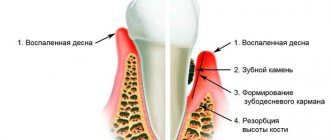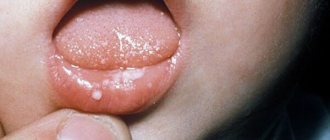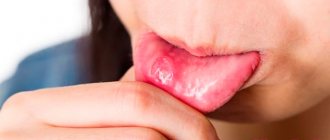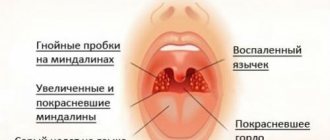Origin of swelling in bruises
To relieve swelling from a bruise, you need to take into account its pathological mechanisms. Any injury is accompanied by local damage to tissues and blood vessels. A bruise refers to mechanical impacts. At the cellular level, it causes membrane rupture, leakage of intracellular fluid (exudate) into free space. The location of the accumulation depends on the strength and direction of the impact.
Most often the limbs suffer from bruises. In case of minor closed injuries (without damage to the skin), the fluid moves under the skin. The arm or leg begins to swell quickly. Compression of sensitive nerve endings by swelling causes pain when touched and moved. Injury to blood vessels with a strong blow leads to the leakage of blood and lymph into the affected area. The swelling turns into a bruise (hematoma). Over the next 3–4 days, the skin color changes from bluish to yellow.
If the injury is localized in the joint area, then irritation and pain cause increased secretion of synovial fluid inside. The joint increases in volume due to swelling, and its functions are impaired. In people with increased fragility of the vascular wall (children, old people), reduced blood clotting, the tumor after a bruise reaches significant sizes.
Quick removal of swelling after a bruise reduces the risk of dangerous inflammation when a “dormant” infection enters the fluid. Microorganisms are carried in the blood from chronic lesions.
Lip contouring: fillers with hyaluronic acid
There are different types of fillers that can be injected into the lip area and around the mouth. The most versatile group of dermal fillers is hyaluronic. 99% of aesthetic problems in our and the world market are solved by them.
Hyaluronic acid (HA) has gained popularity among both cosmetologists and clients due to its versatility, high efficiency and safety with regular use. It is easy to administer and can be quickly removed if the effect is not satisfactory. The undoubted advantage of HA-based fillers is that the result of application is visible immediately.
Hyaluronic acid is not a panacea for rejuvenation, because although it gives a rejuvenating result, it still masks the signs of skin aging rather than slowing down the process itself.
Augmentation with hyaluronic gel quickly gives a real and tangible effect - plump and expressive lips, but you have to pay for beauty: endure pain during injections and experience some unpleasant consequences in the form of swelling, bruises, and redness after the procedure. The most common consequences after lip augmentation are, of course, swelling.
Diagnosis of edema
Swelling is detected by pressing a finger on the skin. A sign of excess fluid is a pit that can last for 1–2 minutes. If the blow was to the face or limbs, then attention is paid to the appearance of asymmetry and bruising due to swelling. Sometimes you have to measure the circumference of the joints on the right and left for comparison. Tight skin with loss of turgor confirms the presence of fluid in the underlying layers. The color of the hematoma determines how much time has passed since the injury.
Detailed questioning about the conditions of the injury helps to clarify the diagnosis. A significant sign is redness and an increase in the local temperature of the skin over the damaged area or joint, which indicates the likelihood of inflammation. Differential diagnosis of a bruise is carried out with a sprain or fracture. In addition to swelling, a sprain is characterized by severe loss of mobility and pain. If a fracture is suspected, attention is drawn to: a crunching sensation, deformation of the limb, intense pain. The problem of how to remove swelling from a bruise is dealt with by traumatologists.
How long does swelling last after a bruise?
In order for swelling on the skin to disappear, it is necessary to restore cells at the site of the bruise (regeneration), strengthen the work of the local network of venules and lymphatic capillaries to absorb and remove fluid into the bloodstream, and dissolve blood clots. These processes are individual for each person. Depends on:
- places of injury (finger, joint, foot, face);
- area of damage and swelling;
- immunity (cells accumulate in the lesion and “restore order”);
- the regulatory role of the nervous and endocrine systems;
- timeliness of treatment.
In people with chronic diseases, swelling lasts longer. For moderately severe symptoms without dysfunction, it is removed after 3–5 days. If the bruise is severe with a hematoma, it goes away in 14–30 days.
Causes
When a tooth is removed, there are a number of reasons that can easily lead to complications and the need for subsequent treatment.
The duration of swelling after tooth extraction directly depends on the qualifications of the doctor, the type of anesthesia, the complexity of the intervention, and the quality of the antiseptic used.
The main reasons that can make swelling the first stage of inflammation in the oral cavity may be:
- Dryness of the tooth socket, which is a consequence of the absence of a blood clot to protect against infection.
- Allergy to drugs used during removal (antiseptic, painkillers).
- Incompetent treatment by a doctor of the tooth socket after removal, followed by the entry of pathogenic microflora into it (remnants of soft tissue, exudate, dental plaque).
- Incomplete tooth extraction, when the interroot septum, tooth fragments or root part remains in the wound. Often, bone fragments remain in the gums after the removal of severely damaged teeth.
- The presence of a cyst that remains after removal. Typically, tooth extraction is combined with sanitation of the oral cavity and requires the prescription of antibiotics.
How to remove swelling from a bruise immediately after an injury?
First aid for swelling of a bruised area includes the following step-by-step measures:
You need to quickly remove rings, watches, bracelets from an injured hand, and if your foot is injured, take off your shoes. When swelling appears, this will have to be done with difficulty, increasing the pain. Place the limb and joint in an elevated position and secure with a soft bandage to limit movements. Apply cold to the site of the bruise immediately after the injury, which will reduce the diameter of the blood vessels and delay the flow of blood. Use pieces of ice, cold lotions, and a heating pad. On the first day, the procedure is repeated 3-4 times for 5-7 minutes at intervals of half an hour (avoid frostbite!). “Draw” an iodine grid on the swollen skin. After 2 hours, apply a compress of ointment or gel preparations. If the pain in the bruised area does not disappear, then take Pentalgin and consult a doctor.
Main complications after emergency care
Such complications include:
development of a fulminant form of edema;
intensive foam production can cause airway obstruction;
angiotic pain. Such pain is characterized by an unbearable pain syndrome; the patient may experience pain shock, worsening the prognosis;
impossibility of stabilizing blood pressure. Pulmonary edema often occurs against a background of low and high blood pressure, which can alternate within a large amplitude. The vessels will not be able to withstand such a load for long and the patient’s condition worsens;
increase in pulmonary edema against the background of high blood pressure.
How to relieve swelling from a bruise in case of injury
To relieve swelling after a bruise in a certain area, you need to take into account the characteristics of blood circulation. Treatment is carried out with drugs that act on the damaged tissue, reducing vascular permeability. At the same time, an ointment or other agent is used that works successfully when administered through the skin using physiotherapeutic devices (phonophoresis, galvanization), magnetic therapy, or paraffin baths.
A “bump” on the forehead represents local swelling and hematoma after a bruise.
For facial bruises
Removing swelling and hematoma from a facial injury is more difficult than from other places. The area has an abundant blood supply. After cold lotions, Badyagu and Sinyakoff ointments are used in treatment. They need to be applied to the skin for 15–20 minutes, then washed off with warm water. Repeated procedures are allowed at intervals of 3 hours. If swelling affects the eyelids or lips, when smearing, make sure that the ointment does not get on the mucous membrane. Therapy is continued until the appearance of the skin is completely normalized (7–10 days).
Badyaga should not be left on the face for a long time. The drug dries out the skin greatly and forms pigment spots.
For bruises of the lower leg and knee joint
The optimal position for the patient to relieve swelling and pain is lying or sitting, but with the leg elevated. Bruises are often accompanied by damage to the periosteum, articular surfaces, and intense pain. Therefore, to help in a targeted manner, ointments with chondroprotectors (Collagen Ultra), Diclofenac are used as an analgesic and anti-inflammatory agent. Relieving swelling is not the main thing; it is important to promptly prevent the introduction of pathogenic bacteria. The swelling lasts a long time. The appearance of a compaction in the bruised area indicates the likelihood of cracks in the bone. Bruised knee - painful to walk
Before applying the ointment for swelling, the skin should be treated with disinfectants.
How to relieve swelling from a foot bruise
A special feature of a bruise in the foot area is the formation, in addition to significant swelling, of cracks, fractures of small bones and arch joints. Traumatologists recommend mandatory x-ray examination. After providing first aid, you should consult a doctor. From the second day, physiotherapy, warming ointments, and agents that stimulate regeneration are prescribed. Due to swelling and a fixing plaster cast, it is not possible to wear usual shoes for up to a month. To reduce the load on the affected leg, you will need to use a stick for 2-3 months. In addition to medications, therapeutic exercises and massage help to speed up the elimination of edema.
How to relieve swelling after a bruised finger
Immediately after a bruise, it is better to immerse your finger in a glass of cold water and massage it for a long time with a piece of ice to reduce swelling and pain. Then apply warm compresses from ointment medications. It is advisable to fix immobility for 3-4 days using a bandage or plaster splint. If you stub your toe, you will have to wear shoes one size larger for 7–10 days.
The appearance of swelling after tooth extraction - normal or pathological
The question of whether there can be swelling after tooth extraction worries many who are faced with the need for extraction and then worry about whether the healing process is proceeding normally. In fact, this is a completely natural and natural phenomenon, which becomes a consequence of the body’s reaction to surgical intervention and tissue injury. Moderate pain and swelling are not a cause for concern.
Is your cheek swollen after tooth extraction - normal or pathological?
When answering questions about how long the symptom lasts and how long it will take for the swelling to go away, it should be noted that everything here is strictly individual, depending on the characteristics of the body, the complexity of the operation performed and the degree of trauma to the tissues of the oral cavity. The swelling usually lasts for several days. The patient should closely monitor his condition. If the swelling noticeably increases in size, the pain increases and other suspicious symptoms appear, this may indicate the development of complications. In such a situation, it is better to see a doctor as quickly as possible.
So, swelling of the gums and even the face from the intervention side is a natural phenomenon and does not require contacting a specialist in the following cases:
- complex extraction – extraction of impacted and dystopic elements, including wisdom teeth. Typically this procedure takes quite a long time and requires cutting into the gums. In some cases, the specialist has to literally cut the tooth out of the bone and perform other traumatic manipulations. As a result, the mucous membrane is severely damaged, which is why subsequent rehabilitation is accompanied by severe symptoms: pain, swelling of the gums and jaw, facial asymmetry, difficulties with swallowing and opening the mouth, a slight increase in temperature,
- against the background of inflammatory and purulent processes - after removing the tooth from the socket, an incision is made on the gum to ensure the outflow of pus. Antiseptic treatment of tissues is mandatory. Sometimes it is necessary to install a drainage system for a while to completely remove purulent exudate. Next, the doctor puts a special medicine into the wound and prescribes a course of antibiotics. In such a situation, swelling of the soft tissues and cheeks is an inevitable phenomenon. You may need to visit your doctor several times to make sure there is no risk of relapse.
- extraction of teeth on the lower jaw - if the jaw is swollen after the removal of the lower teeth, then this is also quite natural. In this case, the risk of complications will be higher than when performing a procedure on the upper jaw. This is due to the fact that the structure of the bone tissue here is more dense, and the roots of the lower teeth are often very curved and tangled.
Most often, wisdom teeth are difficult to remove
. In addition, individual characteristics of the body can contribute to the development of severe swelling. Thus, a similar picture most often occurs in hypertensive patients, as well as in patients with a large volume of subcutaneous fat. Sometimes in this group of people quite vivid symptoms appear even after simple extraction, without massive incisions in the gums and accompanying pathological manifestations.
Traditional methods
Herbal decoctions, which are used in the form of lotions and compresses, will help relieve swelling from a bruise at home. The folk method is easily applicable at home, and has only one contraindication - increased skin sensitivity. To prepare a decoction for edema, you need to steam a tablespoon of dry raw materials in a glass of boiling water for 2 hours. On the first day, the liquid is pre-cooled; on the second, a warm compress is applied for several hours. Healers recommend herbs:
- plantain;
- sagebrush;
- yarrow;
- St. John's wort.
In case of injuries to the arms and legs, the pain is relieved by warm baths with salt and herbal decoctions.
To combat post-traumatic pain and swelling, they offer recipes from natural remedies:
- bandage a softened cabbage or plantain leaf, change it 2 times a day;
- lotions made from chilled tea leaves are especially recommended for hematomas on the facial skin;
- a mixture of honey and aloe juice in the form of a compress;
- mix equal amounts of iodine tincture, apple cider vinegar and salt, apply by rubbing into the skin for first aid;
- potato juice in lotions is useful for relieving facial swelling;
- a compress of potatoes and baked onions is recommended at night;
- paraffin applications provide long-lasting moderate warmth;
- Rubbing essential oils (eucalyptus, peppermint) into the skin over swelling is useful to combine with massage.
You cannot apply compresses if the skin at the site of the bruise is damaged by abrasions or abscesses. Before starting self-treatment, the wound should be shown to a doctor.










